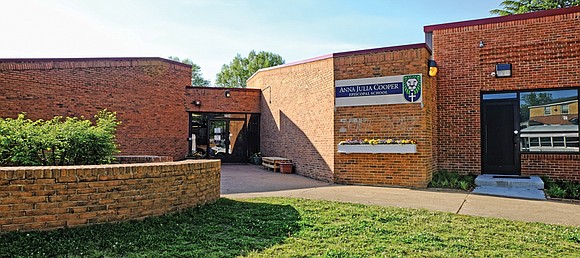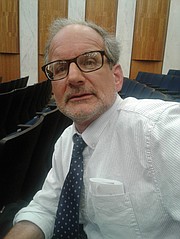Room to grow
Anna Julia Cooper Episcopal School seeks to expand with help from city
Jeremy M. Lazarus | 5/11/2018, 8:01 a.m.

A private Episcopal school in the East End that currently offers a tuition-free education to l08 children mostly from low-income families living in public housing is working with the city to buy an acre of land for its first big expansion.
Under a proposal before Richmond City Council, the Anna Julia Cooper Episcopal School — named for a renowned African-American educator, scholar and women’s rights activist — would buy eight tax-delinquent properties that sit next door to the school’s current home at 2124 N. 29th St.
The proposal calls for the school to buy from the city the eight parcels for about $145,000, which includes the city’s legal costs for taking the property, and then invest $5 million to $6 million to build new classrooms and a gymnasium that also could be used by the community for meetings, events and recreation programs.
During a committee session Monday, City Council delayed a vote for a month to give the City Attorney’s Office time to amend the specific sales ordinances to incorporate purchase agreements between the city and the school that would include an assurance the gym would serve both the school and the community. None of the council members opposed the property sale.
The purchase is to include five parcels mainly in the 2100 block of North 29th Street near the Creighton Court and Church Hill North developments and three properties on two side streets, 2820 and 2822 Purcell St. and 2807 Newbourne St.
The eight parcels, along with one the school already owns at 2108 N. 29th St., would provide nearly 1.3 acres for development adjacent to the school building, a former day care center for the Richmond Redevelopment and Housing Authority.
The school has leased the space from RRHA since 2011 and will continue to hold classes there when the new space is complete.
Mike Maruca, the head of the school, sought to dispel rumors that the city is giving the property to the school.
“We will be paying the full cost for the property,” Mr. Maruca said.
It was confirmed by City Attorney Allen L. Jackson.
The city’s only contribution would be to sacrifice future property taxes. According to the ordinances of sale before the council, “private educational institutions do not pay real estate taxes.”
The council is being told the sale would be a good deal as Anna Julia Cooper’s proposed use of the property would support the “much larger redevelopment effort” that includes new apartments and homes that are to replace the former Armstrong High School site nearby in the 1600 block of North 31st Street and the Creighton Court public housing community.
The school, which opened in 2009 with 25 students, now provides classes for 108 students in the fourth through eighth grades.
The expansion would allow the school to add kindergarten through third grade and double its student population to 220, Mr. Maruca said. Middle school students would attend classes to be developed with the new gymnasium.
Mr. Maruca said the school is financially self-supporting, relying mainly on individual donors to pay the expenses, which he said average $13,000 a student. He said the school also receives support from several area Episcopal churches, including St. James’s, St. Stephen’s and Grace and Holy Trinity.
Mr. Maruca previously led the community-oriented Sacred Heart Center in South Side before joining the Anna Julia Cooper School. He said it is important for the school to build a relationship with the community. He said the school would do all it could to make the facilities available for beneficial non-school purposes.
He envisions the planned gymnasium as meeting the needs of the school and the community, although he wants the school’s needs to come first.
He and other city officials said they would be working with the City Attorney’s Office to ensure the language in the purchase agreements reflects that arrangement.
Mr. Maruca said, “We do want to make this available to the community,” which lost its biggest recreation outlet with the demolition of the gym at the former Armstrong High School. The old high school building was demolished in the past year to make way for the development of about 250 apartments and houses, the first step to replacing Creighton Court.
“However,” Mr. Maruca said, “we still are a school.”
Mr. Maruca said the gymnasium would allow the school to provide basketball, volleyball and other athletic and arts programs for students. But he also envisions it serving as a host site for community theater, dance and music programs, along with community basketball programs and community gatherings.
He said if all goes well, the gym could be finished within a year or so and the full development completed within two years.
He said the major focus of the expansion of the school is “to help its students develop the self-confidence, strength of character, academic skills and sense of hope needed to open the door to a promising future.”
That includes providing counseling and guidance for graduates as they enter high school and as they move onto careers or college, he said. “We’re in it for the long haul,” he said.








